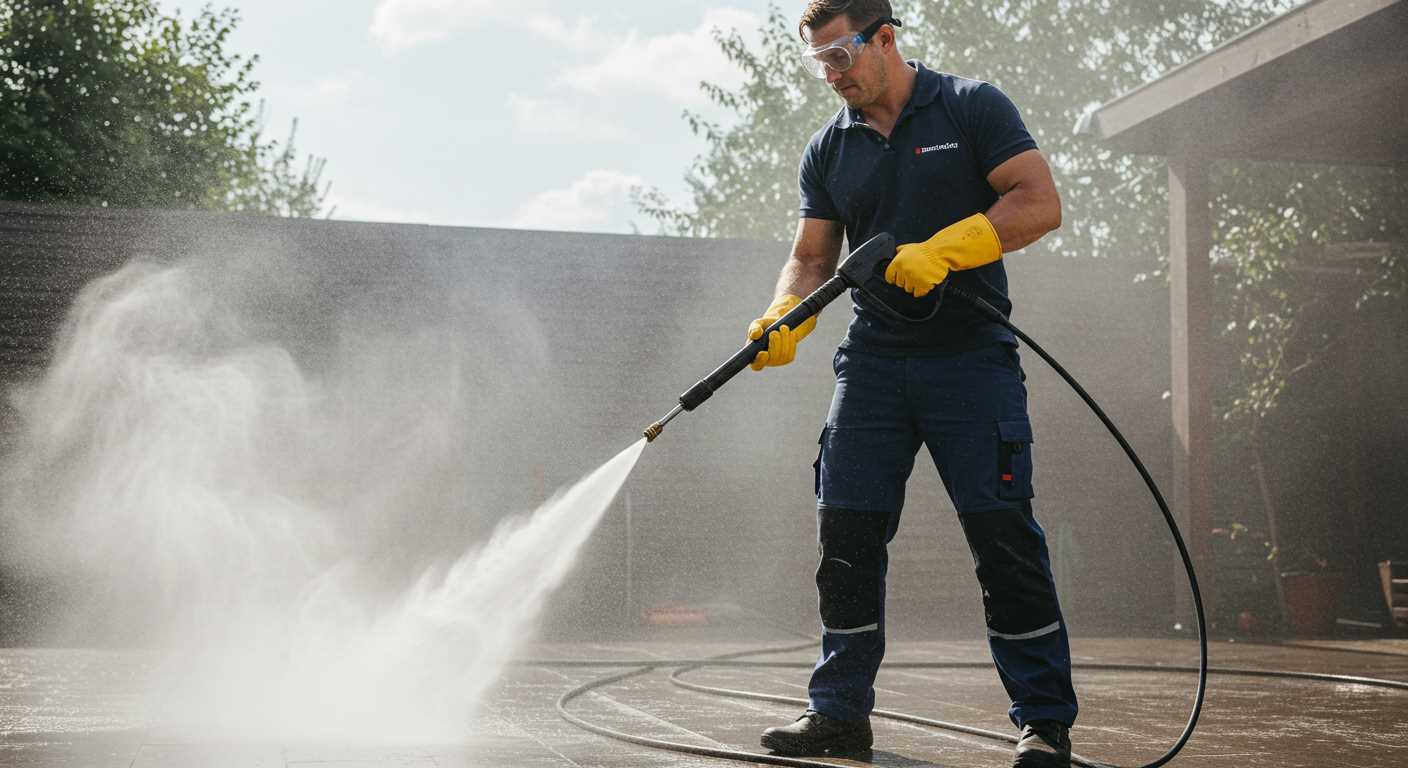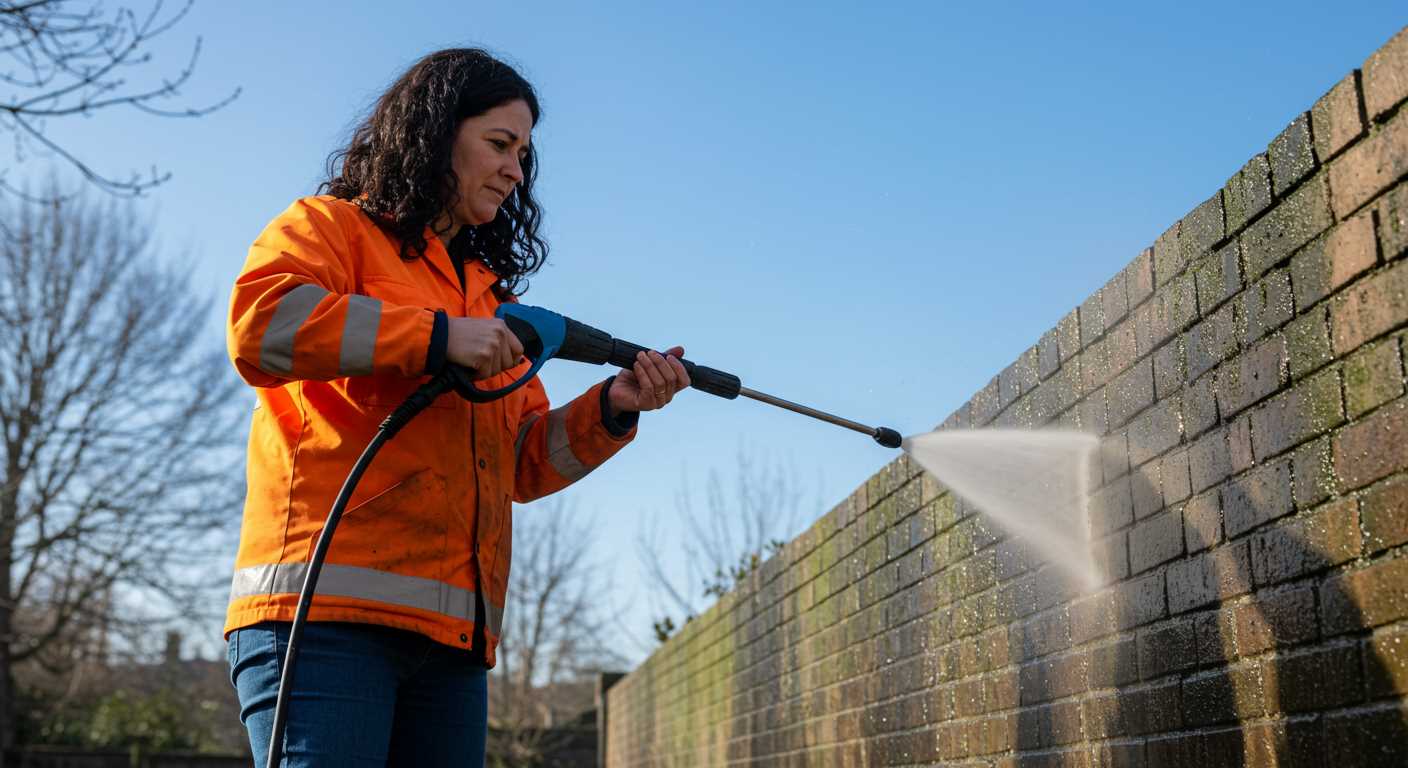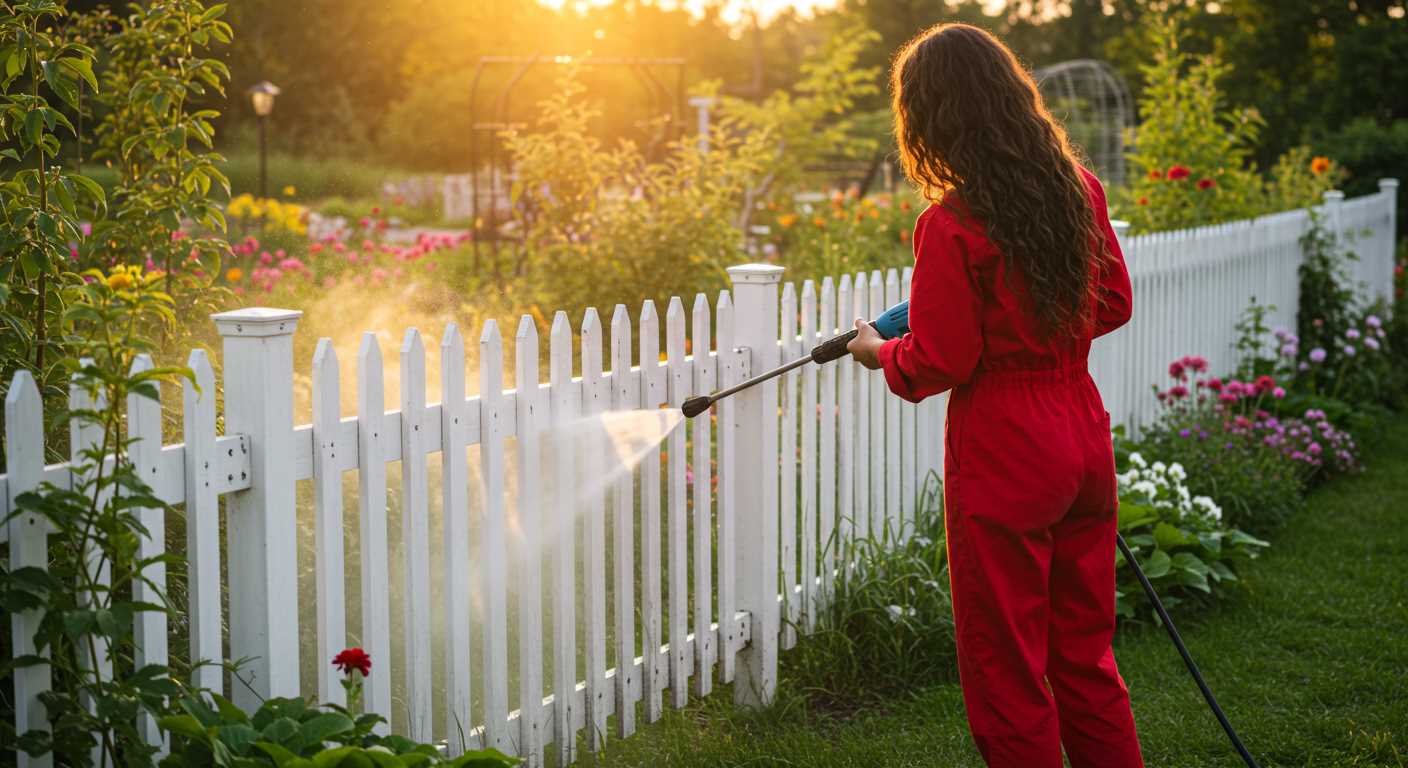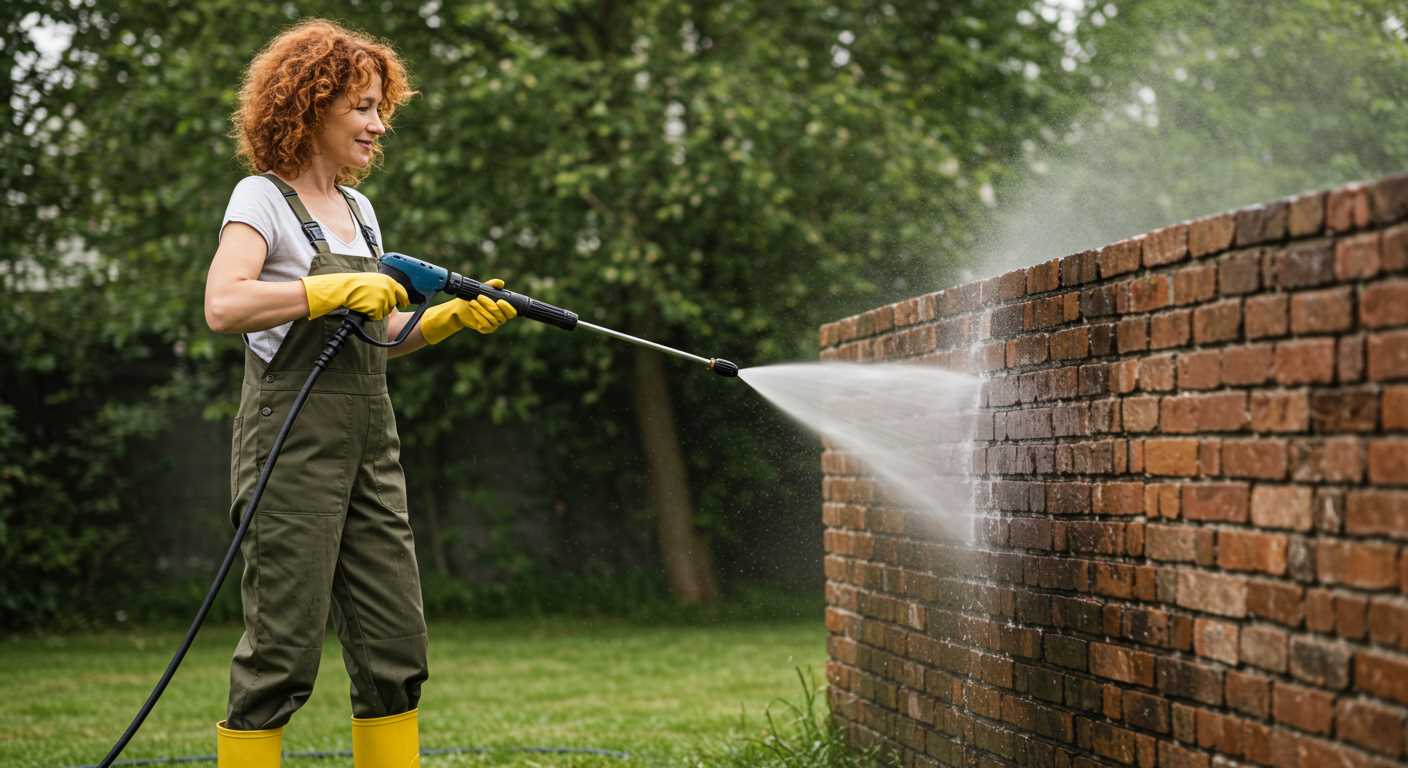



Fill a container or bucket with water to kickstart your cleaning session. This serves as the water source for your appliance, enabling you to effectively manage grime and dirt. Select a container large enough to hold sufficient liquid for the duration of your task.
Connect your device to the water supply. Ensure you attach a suitable suction hose to the appliance, which allows it to draw directly from the bucket or container. Verify the hose fits securely, as a loose connection can lead to a drop in performance.
Position the hose’s end appropriately within the container. Best practice involves placing it as deep as possible to prevent drawing in air, which could disrupt the flow and efficiency. If you have access to a filter, affix it to the hose opening to guard against debris.
Test the setup prior to use. Switch on the device briefly to confirm it pulls water adequately from the bucket. This step is crucial to ensure seamless operation throughout the cleaning process. Keep an eye on the water level in your container, and refill it as necessary to avoid disruption.
Following these steps, I’ve tackled numerous cleaning jobs efficiently, even in the absence of a conventional outdoor water source. The method allows for flexibility, ensuring you can maintain a pristine environment wherever you work.
Using a Water Barrel as a Water Source

Connect the water barrel to the cleaning device using a suitable hose. Ensure that the hose fits snugly on the barrel’s outlet. Adding a basic filter at the end of the hose can help prevent debris from clogging the machinery.
Gravity Feed System
Position the barrel high enough to enable a gravity feed. By elevating the barrel on a sturdy platform, water can flow downwards naturally, reducing strain on the motor and optimising the flow rate. It’s ideal to keep the barrel level with or above the intake of the equipment.
Manual Pump Option

If gravity feed is not feasible, consider installing a manual pump. This device can draw water from the barrel and create pressure for operation. Opt for a pump with sufficient capacity to avoid interruptions during the task. Ensure it’s compatible with your equipment’s requirements.
Connecting a Pressure Washer to a Sink Faucet

For those working with indoor plumbing, attaching to a sink faucet is a straightforward alternative. Begin by identifying the tap type; most standard faucets can accommodate universal adaptors.
Firstly, acquire a suitable adaptor designed for your sink tap. Ensure it has a threaded connection for a secure fit. Attach this adaptor to the tap securely, preventing leaks. If necessary, use plumber’s tape to reinforce the connection.
Next, connect the hose from the machine to the adaptor. Make sure the hose is tightly secured; this will avoid any water pressure issues during operation. Pay attention to the diameter of the hose, as it should match the specifications of the device for optimal performance.
After connecting, turn on the faucet slowly to check for leaks. If everything appears sealed, proceed by powering on the equipment and adjusting the nozzle as required. Monitor the setup initially to ensure there are no issues with water flow or pressure.
This method enables effective indoor cleaning without the need for an external water source, making it feasible for urban dwellers or those with limited outdoor plumbing options.
Utilising a garden hose with a submersible pump
Firstly, connect your garden hose to a submersible pump. Place the pump into a water source such as a reservoir or a large bucket, ensuring it is fully submerged to avoid damage. The pump intake should be positioned away from any debris to maintain optimal performance.
Next, secure the garden hose to the outlet of the pump. Make sure the connection is tight to prevent leaks. If necessary, use a hose clamp for added security. Ensure the other end of the hose is connected to the inlet of the cleaning equipment.
Before activating the pump, double-check all connections. Once everything is secured, plug in the pump to a power source. Turn on the pump to begin drawing water through the hose. Monitor the pressure levels as you operate the cleaning device, adjusting the speed as required for the task.
Optimising Performance
For improved flow rate, consider using a hose with a larger diameter. This enhances the efficiency of water delivery from the submersible pump to the equipment. Additionally, avoid long runs of hose if possible, as this could lead to pressure loss.
Safety Precautions
Ensure all electrical equipment is appropriately rated for outdoor use. Avoid using the pump in heavy rain or conditions that could lead to electric shock. Always unplug the pump before making adjustments or moving it from the water source.
Adjusting Pressure Settings for Different Water Sources
Understanding the optimal settings for your cleaning equipment is key to achieving the best results, especially when sourcing water from various locations. Start by identifying the pressure and flow rate of your water supply.
Low-Flow Sources

If drawing from a barrel or similar container, ensure the unit is adjusted to accommodate lower pressure. Decreasing the pressure setting will prevent overworking the motor, making it run smoothly. A nozzle offering a wider spray pattern can complement this adjustment, maximising coverage while using less force.
Direct Sink Connection
When connected to a kitchen or utility sink, check the water temperature and pressure. Sinks often have higher pressure, so fine-tune the settings accordingly. A higher pressure might be useful for tough stains but can be reduced for sensitive surfaces to avoid damage. Always start with a mid-range setting and adjust as required to find the perfect balance.
Choosing the Right Detergent for Limited Water Access
.jpg)
Opt for concentrated, biodegradable detergents that require minimal rinsing. These formulations are designed to perform effectively with reduced water volumes while being gentle on surfaces and the environment.
Types of Detergents
- Degreasers: Ideal for automotive applications and heavy machinery. They break down oils and grease efficiently, even with limited water.
- All-purpose cleaners: Suitable for various surfaces including wood, stone, and concrete. Choose those that are specially designed for low water usage.
- Eco-friendly solutions: Look for products made from natural ingredients. They’re not only safe but also effective at low flow rates.
Application Tips
- Mix the detergent according to manufacturer’s instructions. Concentrated formulas may need dilution, but ensure you’re using the right balance for the task.
- Apply the detergent with a foam cannon or soap attachment to maximise the coverage while conserving water.
- Allow the detergent to dwell for the recommended time before rinsing. This enhances cleaning efficiency, especially with limited water.
Use detergents that promote quick breakdown and easy rinsing. Avoid those that leave residues requiring extensive water for removal. Always test a small area prior to full application to ensure compatibility with the surface being treated.
Transporting Water in Containers for Effective Cleaning

For optimal cleaning, consider using sturdy containers like jerrycans or food-grade barrels to transport water. Ensure each container has a secure lid to prevent spills during transport. Fill the containers at a local water source, such as a friend’s home or public tap. It’s advisable to use containers with spouts or nozzles, facilitating easy pouring into the inlet of your equipment.
Calculate the amount of water needed based on your specific tasks. For smaller areas, 20 litres may suffice, while larger jobs could require several hundred litres. Using multiple smaller containers can be more convenient than one large one, allowing for manageable weights and easier handling.
To streamline the process, consider the following:
| Container Type | Capacity | Best Use |
|---|---|---|
| Jerrycan | 10-20 litres | Small tasks, easy to carry |
| Food-grade barrel | 50-200 litres | Larger jobs, requires a trolley |
| Water cooler jug | 19 litres | Portable, easy to handle |
To maximise transportation efficiency, plan your route to fill and transport water in the fewest trips possible. Keep a funnel on hand to avoid spillage while transferring water from the container to the cleaning equipment. Regularly check for leaks in the containers to ensure you’re not losing valuable water during the trip.
Consider equipping yourself with a dolly or cart if transporting heavier or larger containers. This will reduce physical strain and make the job safer. Always remember to follow local regulations concerning the collection of water, especially if you’re retrieving it from public sources.
Maintaining Your Pressure Cleaner for Alternative Setups
Regular upkeep is pivotal for ensuring optimal operation, especially when adapting to non-standard water sources. Here are key approaches I recommend for maintaining your equipment in such scenarios:
Routine Checks
- Inspect hoses and connections for leaks or wear. Any damage can affect performance and lead to inefficiencies.
- Monitor filters and screens regularly. Clogging can occur more frequently when drawing from alternative sources.
- Test the motor and pump functionality periodically. Sounds or vibrations that differ from the norm indicate a need for professional evaluation.
Water Quality Treatment
- If utilising rainwater or stored water, consider installing a water treatment system to remove debris and contaminants.
- Utilise water softener solutions if your supply includes hard water, as mineral buildup can hinder operation and shorten equipment lifespan.
Adopting these maintenance strategies enhances functionality and longevity, and helps you adapt seamlessly to various water supplies.
FAQ:
Can I use a pressure washer if I don’t have an outside tap?
Yes, you can use a pressure washer without an outside tap. One common solution is to fill a large container, such as a bucket or a tank, with water and then use a siphon hose connected to the pressure washer. Ensure the hose is submerged in the water and that the pressure washer’s inlet is properly connected. This approach allows the pressure washer to draw water from the container.
What equipment do I need to use a pressure washer without an outside tap?
To use a pressure washer without an outside tap, you will need a few items: a pressure washer, a sturdy water container like a bucket or a tank, a vacuum hose or siphon hose to connect the water source to the pressure washer, and potentially an adapter for the hose. Ensure the container holds enough water for the duration of your cleaning task.
Are there any specific types of pressure washers that work better without an outside tap?
Certain pressure washers, particularly those designed for portability, perform well without an outside tap. Electric models with the ability to self-prime are advantageous because they can draw water from a container or a tank. It’s advisable to check the manufacturer’s specifications to ensure compatibility with a non-tap water supply.
How do I set up my pressure washer with a water container?
Setting up a pressure washer with a water container involves a few straightforward steps. First, place your container on a stable surface near the work area. Connect one end of the siphon hose to the water inlet on the pressure washer and submerge the other end into the container. Make sure the hose is fully submerged to prevent air from entering the system. After ensuring that everything is secure, turn on the pressure washer and check for any leaks.
Can using a pressure washer without an outside tap affect its performance?
Using a pressure washer without an outside tap can impact its performance, but if set up correctly, it should still function efficiently. The water container should be filled adequately to supply enough water for the job. If the container runs out of water or if air gets into the hose, the pressure washer may lose pressure or stop working. Therefore, monitoring the water level during use is key to maintaining optimal performance.










